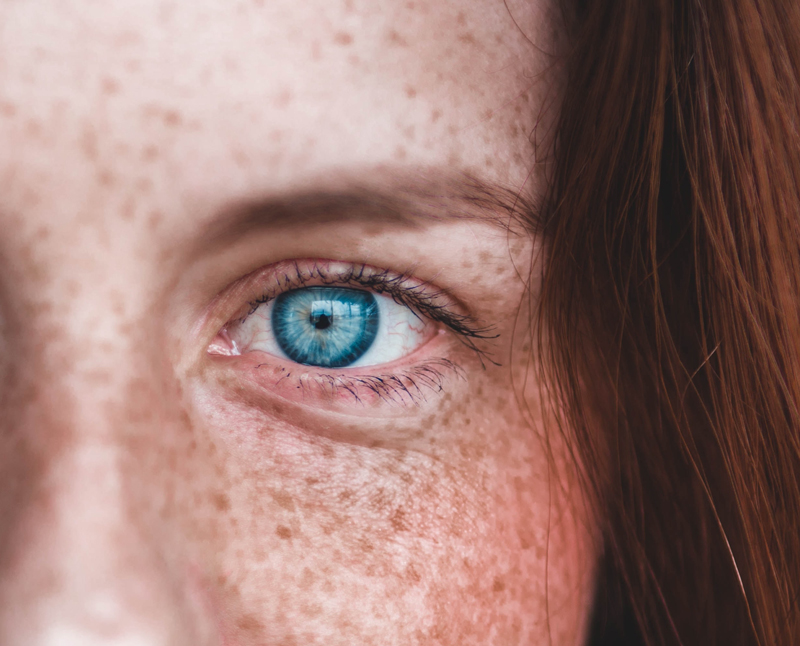As with any surgery, cataract surgery poses risks to the individual. Potential cataract surgery complications range from minor eye inflammation to devastating vision loss. While the exact risks are specific to each individual, the most common difficulties arising after cataract surgery are as follows:
- Infection
- Bleeding
- Persistent inflammation – bruising, swelling and irritation of the eye
- Cystoid Macular Edema
- Retinal tears or detachment
- Dislocated Lens
- Rupture of the Posterior Capsule
- Dislocated lens material
- Changes in eye pressure (intraocular pressure)
- Astigmatism
- Posterior Capsule Opacity
- IFIS
- Dry eye syndrome
- Droopy eyelid (ptosis)
We will deal with each one of these conditions in turn, but first we need to understand the procedure itself.
About the Operation
The operation usually lasts around 15 to 20 minutes, and starts with the application of an anesthetic:
- Once the anesthetic takes effect, a tiny cut is made on the surface of the eye.
- Ultrasound energy is used to break up the cloudy lens (cataract), which is then removed through a small tube.
- The lens sits inside a sac of thin tissue called a capsule. This is kept in place to support an artificial replacement lens (intraocular lens), which is inserted through the same cut after the cataract is removed. It’s folded to help insert it through the cut.
- The intraocular lens unfolds once it has been positioned in the eye. The lens is made from plastic or silicone and remains permanently in your eye.
The complications that may arise from the above procedure are many and varied, and we start with the most severe.
Infection (Endophthalmitis)
Endophthalmitis is the most serious complication of cataract surgery and can occur after routine cases. It is a rare, but serious, postoperative infection inside of the eye and it can have a devastating consequence on a patient’s vision with some patients losing all light perception and becoming blind.
Endophthalmitis symptoms include excessive eye redness, pain, light sensitivity, and worsening vision, perhaps loss of vision. These symptoms normally manifest themselves a few days after surgery.
Diligent surgeons undertaking cataract surgery do go to great lengths to reduce the possibility of this intraocular infection. Nonetheless, even with these precautions, endophthalmitis occurs in approximately one out of 3,000 cases, although other studies have reported the incidence of endophthalmitis to be between 0.13% and 0.7%(1).
The primary source of this intraocular infection is considered to be bacteria from the patient’s cornea and conjunctiva surfaces or from the lacrimal glands, eyelids, or extraocular muscles. The bacteria most frequently isolated are mainly staphylococcus epidermidis which account for 70% of culture-positive cases, whereas staphylococcus aureus is isolated in 10% of culture-positive cases and streptococcus species in 9%. However, if an infection already exists with these bacteria and comes into contact with the surgical site, this could lead to serious visual impairment.
If a patient does develop endophthalmitis, intraocular antibiotics are often injected directly into the eye to minimize the spread of the infection. Sometimes an additional surgery (vitrectomy) is performed to remove the jelly-like substance of the eye; which is hoped will subsequently control the infection.
Bleeding
While bleeding can occur inside the front of the eye where the actually surgery is being performed, which is quite rare, more serious acute bleeding can occur in the choroid. This infrequent and unpredictable bleeding is known as choroidal hemorrhage.
The choroid is a delicate pattern of fine blood vessels that supplies and nourishes the retina. It usually occurs in elderly patients or patients who have high blood pressure or have glaucoma, but it is very unpredictable. In some cases of choroidal hemorrhage, the bleeding is localized, but in more severe cases of choroidal hemorrhage, visual loss can be substantial.
Inflammation
Since cataract surgery was first introduced, inflammation has always been accepted as a natural consequence of the procedure. Inflammation can cause light sensitivity, pain or achiness in the eyes.
In addition, bruising or a Black Eye may occur if an injection has been used around the eye to complement or replace anesthetic eye drops.
Another possible inflammatory condition is where swelling occurs in the cornea. The cornea is the transparent front part of the eye that covers the iris, pupil, and anterior chamber. Corneal edema is associated with cloudy vision, or the appearance of halos around lights, which may be transient or permanent. This condition occurs when the cornea is unable to keep itself clear, and the cornea becomes overly hydrated.
Toxic Anterior Segment Syndrome or TASS is a non-infectious inflammatory condition that may occur following cataract surgery. It is usually treated with topical corticosteroids in high dosage and frequency.
While immediately after surgery anti-inflammatory agents may be given to the patient to resolve the inflammation and to reduce patient discomfort, persistent inflammation may continue, or even worse, cystoid macular edema may develop and endanger the eye.
Cystoid Macular Edema
The retina is the neural tissue which lines the entire inside of the back part the eye. The very center of the retina is called the macula, which is the part of the retina that responds to light, and which is responsible for central vision.
After cataract surgery, inflammation can sometimes cause retinal blood vessels to leak fluid which accumulates in the macula, causing the nerve cells to swell and cause decreased central vision. This swelling is referred to as cystoid macular edema, and may occur weeks, months or even years after an otherwise uncomplicated surgical procedure.
Retinal Detachment
Cataract surgery increases the risk of retinal detachment, which should be considered a medical emergency. Retinal detachment can occur months or years after a perfectly successful cataract procedure.
Retinal detachment is a condition that occurs when a tear in the retina (caused by the surgery) allows fluid to seep through. This seepage causes the retina to then detach from the back of the eye. This problem occurs in approximately one half of one percent of cataract surgery patients.
The symptoms of retinal detachment include ‘floaters’ (little cobwebs or specks that seem to float about in the field of vision), flashing lights, shadows or dark spots, bubbles or curves in the field of vision, or the more sinister sensation of a veil being pulled across the line of vision.
When diagnosed with retinal detachment, the shorter the time to reach treatment, the better the overall prognosis.
Decentered or Dislocated Intraocular Lens Implant (IOL)
In some cases after cataract surgery, the artificial lens (intraocular lens) moves or does not function properly and may need to be repositioned, exchanged, or removed. Symptoms of a lens implant that has moved or become dislocated could be where the patient may report seeing the edge of the lens implant, or the patient may develop double-vision. If the intraocular lens is too badly dislocated, there could be a significant decrease in the visual acuity of the patient.
How can an IOL become badly positioned or dislocated?
In most cataract surgeries, the intraocular lens is placed inside the “capsular bag,” which contains the cloudy natural lens or cataract of the eye.
During cataract surgery, considerable effort is made to maintain the integrity of the capsular bag so that the intraocular lens can be positioned correctly within it. As the capsular bag is extremely thin (approximately the thickness of a single red blood cell), it can sometimes rupture or break.
Also, the capsular bag itself may become dislocated because of the weakness of the fibers that hold it in place.
If IOL dislocation occurs following cataract surgery, repositioning the lens should be done as soon as possible to avoid the lens implant becoming settled and ‘scarring’ into place.
Rupture or tear of the Posterior Capsule
A posterior capsular tear may be a complication that occurs during cataract surgery. The rate of posterior capsular tear among skilled surgeons is between 2% to 5%.
During the cataract surgery procedure, the cloudy lens material of the cataract is “chopped up” and suctioned to remove it from the eye. However the membrane that surrounds the lens is left in place to support the new implant. Occasionally it is possible that the posterior lens capsule will tear or rupture during this procedure.
If this occurs, surgical management may involve a procedure known as an ‘anterior vitrectomy’, which aims to remove and repair the body that fills the interior of the eyeball between the lens and the retina so that the Intraocular Lens Implant (IOL) can be properly set into position.
Dislocated Lens Material
Posteriorly dislocated lens material is the rare occasion where fragments of the cataract lens have fallen into the back cavity (vitreous cavity) of the eye. Often small pieces of posteriorly dislocated lens material are well tolerated by the eye without problems. However, when larger pieces are present and could cause the development of excessive inflammation, a vitrectomy may be required to remove the lens material.
Glaucoma – Intraocular Pressure
Glaucoma refers to a category of eye disorders often associated with a dangerous increase in internal eye pressure (intraocular pressure or IOP), which can damage the eye’s optic nerve which is the vision nerve responsible for transmitting light-generated nerve impulses from the retina to the brain. We interpret these electrical signals as vision.
If IOP remains high, (ocular hypertension) treatment options after the cataract surgery include eye drops, laser procedure, or additional surgery.
Astigmatism
Astigmatism is a common condition that may cause blurred vision. The distorted vision is due to the eye’s cornea or lens having an irregular shape. Cataract surgery can induce astigmatism if during the procedure it was necessary to use sutures or stitches as a result of the Corneal incision not sealing correctly. Such an event may distort the shape of the Cornea and therefore bring on astigmatism.
If swelling alone caused the astigmatism then it will gradually go away as the swelling diminishes. If the astigmatism was caused by the use of stitches, then once they are removed it is likely that the Cornea will return to its original shape.
Posterior Capsule Opacity (Secondary Cataracts)
One of the most common complications of cataract surgery is posterior capsule opacity (PCO), when the eye tissue that encloses the artificial lens becomes cloudy and may cause the vision of the patient to become blurred. This condition is called an after-cataract. An after-cataract can develop months or years after cataract surgery.
During cataract surgery, the surgeon removes the cloudy natural lens of the eye, i.e. the cataract and replaces it with an intraocular lens implant. When the cataract is removed, the surgeon makes every attempt to maintain the integrity of the capsule that contained the natural lens so the new lens can be placed within it. However, between 20 to 30 percent of patients who have intact posterior capsules have haziness of the capsule, so vision becomes blurry. This is because after cataract surgery, the posterior capsular cells may undergo hyperplasia and cellular migration, showing up as a thickening, opacification and a general clouding of the posterior lens capsule.
The problem can be treated with a laser procedure known as YAG laser capsulotomy. A laser removes the hazy posterior capsule from the line of sight without making an incision or “touching” the eye. The most important risk with the YAG laser capsulotomy is that the retina can become detached from the inner back of the eye.
Statistics suggest that the lifetime risk of a detached retina as a cataract surgery complication in the United States is about 1 percent. That number rises to about 2 percent after YAG laser capsulotomy.
Intraoperative floppy iris syndrome (IFIS)
If the male patient is taking prostate drugs to improve urine flow at the time of the cataract surgery, then there is a risk that a complication known as intraoperative floppy iris syndrome (IFIS) may develop. Higher rates of detached retinas during cataract surgery also have been associated with use of these drugs.
Typical alpha-blocker prostate drugs relax the prostate muscles to help the bladder empty. They can also affect muscles in the colored part of the eye, the iris. During cataract surgery, the eye’s pupil can suddenly constrict and thereby hinder the surgeon’s ability to successfully complete the operation, resulting in possible complications.
About 95 percent of nearly 1,000 cataract surgeons who responded to a 2008 American Society of Cataract and Refractive Surgery (ASCRS) survey said that they have indeed encountered IFIS in men taking alpha-blocker prostate drugs. The problem is complicated by the fact that most men fail to inform their eye surgeon that they are taking these alpha-blockers for prostate or other problems in the first place.
Dry Eye Syndrome
Dry eye disease (keratoconjunctivitis sicca) is a condition that can occur after cataract surgery. Symptoms include ocular dryness, burning, sensation of an irritant in the eye (foreign-body sensation), blurred vision that clears upon blinking, and stickiness of the eyelids (especially upon waking). Several factors known to exacerbate dry eye are present around the cataract surgery procedure itself. These include the disruption of the corneal nerves and the toxic effect of various medications used during the surgery such as antibiotics, steroids and anti-inflammatory drugs.
Droopy Eyelid (Ptosis)
Ptosis simply means droopy eyelid. The most common cause of ptosis in adults is the separation of the levator muscle from the eyelid. This may occur after eye surgery such as cataract surgery.
Treatment is usually surgical and involves tightening of the lifting (levator) muscle within the eyelid, with multiple procedures possible to achieve the desired outcome. Conclusion
From serious infection to the less troublesome droopy eyelid syndrome, the potential consequences of cataract surgery do make somber reading. In the extreme, a complication could lead to the complete loss of vision. That is why many people, better-informed about the risks and with greater product knowledge about the alternatives, are choosing remedial medications rather than surgery. Can-C Eye drops are one such alternative to surgery. For the first time cataracts can be treated simply by the daily use of eye drops. Specifically designed of the treatment of senile cataracts and using a unique, patented formula containing the active ingredient N-acetylcarnosine, Can-C Eye drops gently but effectively halt and then reverse the progress of cataracts.
References
Mamalis N, Kearsley L, Brinton E. Postoperative endophthalmitis. Curr Opin Ophthalmol 2002;13:14-18. Keywords:
- Endophthalmitis
- Choroidal hemorrhage
- Cystoid Macular Edema
- Retinal Detachment
- Intraocular Lens Implant
- IOL
- Rupture of the Posterior Capsule
- Glaucoma
- Intraocular pressure
- IOP
- Astigmatism
- Posterior Capsule Opacity
- PCO
- IFIS
- Dry eye syndrome
- Pptosis



